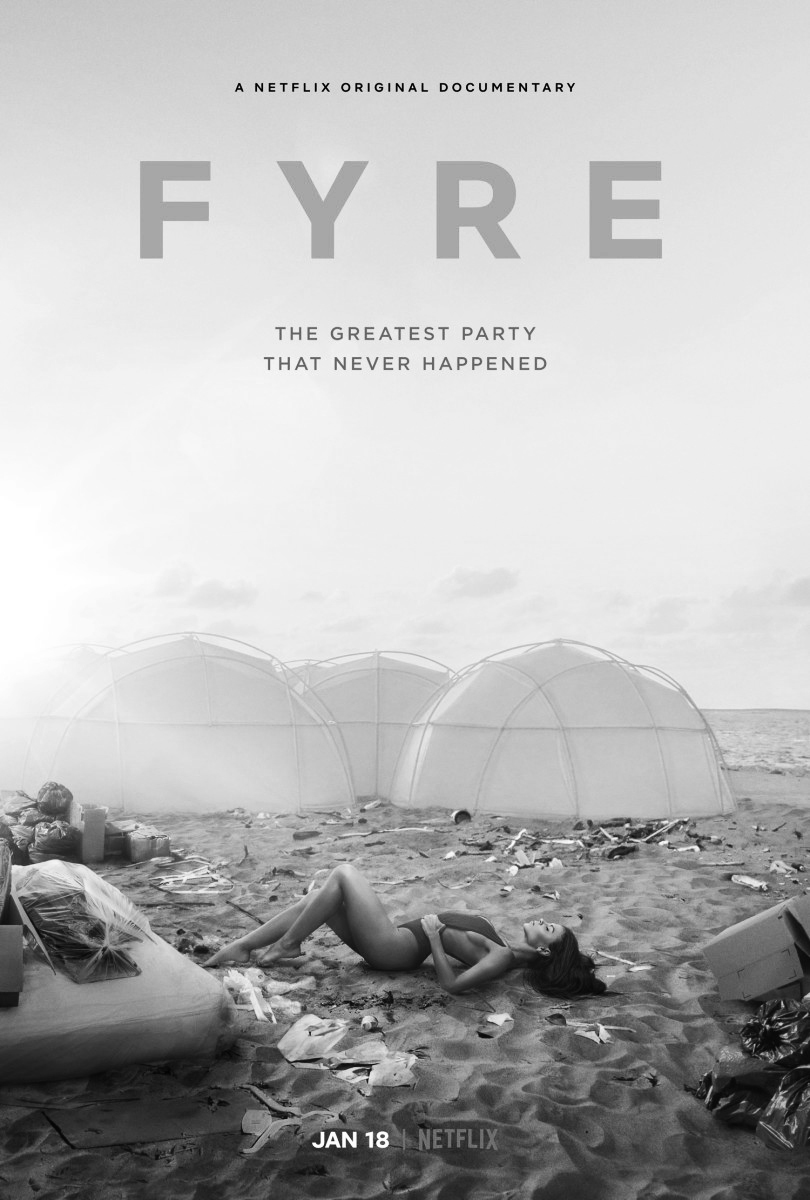The Fyre Festival is once again in the spotlight with the release of two documentaries–one from Netflix and one from Hulu–of the failed concert. The idea of having a music festival on “Pablo Escobar’s Private Island,” which has no infrastructure to withstand ten thousand people , soon crashed and burned when introduced by Billy McFarland, CEO of Fyre Media Inc, and rapper Ja Rule in 2017 . The tickets cost several thousand dollars per person and the only amenities at the festival were disaster relief tents, wet mattresses and a piece of toast with cheese on it. Both documentaries discuss the unimaginable difference between the advertised festival and the end result, leaving the viewer to gape at the power of advertising.
The issue of advertising has been widely discussed in relation to Fyre Festival, with the festival being sold to the public through videos featuring some of the world’s top models. These models were filmed hanging out in yachts, drinking champagne, hanging out with pigs on the beach. In effect, they imply that the festival gives the average man the experience of a lifetime. Of course, this was not the end results. In fact, none of the models were present at the festival, and unless the definition of experience of a lifetime is to survive on a semi-built campsite, there was no such experience present either. After all of this, there have been several subpoenas for models like Kendall Jenner and Bella Hadid, who are accused of false advertising and luring people into what turned out to be a disaster. Some experts have questioned whether the models should testify for promoting the festival because they did not know what was happening behind the scenes. Even Brett Kincaid, the director from Matte Projects who was brought in to film the promotional material for the festival, says in the Netflix documentary that the festival did indeed happen; he then continues to say that it happened for the models and the people planning the festival. This all indicates that the models were not tricked by the people hiring them, but that they too believed in what they were promoting.
This leads to a bigger question at hand: Should the promoter be held responsible for the product’s performance? For example, if Matthew McConaughey promotes a Lincoln car and a month later a Lincoln car accident takes place, does that mean Matthew McConaughey should be sued by whoever was affected? Or even a simpler example: if a product does not look the way it is, yet it is still sold to consumers, should a subpoena be given out?
If you answered yes to any of these questions, then you must consider how advertising is done from the ground up. Anything ranging from promotions of food products to cars or to online services do not look as good as or perform as well as they are advertised. Yet, we consumers still take this discrepancy between advertising and reality as something that is natural. No, it is not natural. Using mashed potatoes instead of ice cream in an ice cream ad to have the perfect scoops of ice cream is not loyal to the truth.
I am not saying that one should not film creative ads that hint at the function of the advertised product, or that we should just kill the way we do advertising nowadays. , Companies, and not the consumers, should face the burden of notifying the public that an ad is not representative of a product. This practice is already taking place on a smaller scale on the social media platform Instagram as companies address the rise of social media influencers.. Every time influencers advertise a product with a perfect, accompanying photo, they are required to put the hashtag #ad in the caption of the post The same process should be implemented in commercial ads–commercials must clearly state that an ad is a manufactured version of reality. This notification must be clearly expressed because no consumer takes the time or is humanly capable of reading all of the small text that slides at the bottom of an ad. .
In the end, the Fyre Festival and the documentaries that have spawned off it have brought interesting topics to the forefront of public discussions. The fact that one of the event coordinators was ready to perform fellatio to bring water to the festival and the fact that Billy McFarland lied to investors to bring in more money all show the lengths people are willing to go to make something happen. Out of all this craziness, if there is one thing that the average person should take away is the power of advertising, and how it needs to be regulated. If not regulated, many Fyre Festivals will be lining up in the horizon. •









